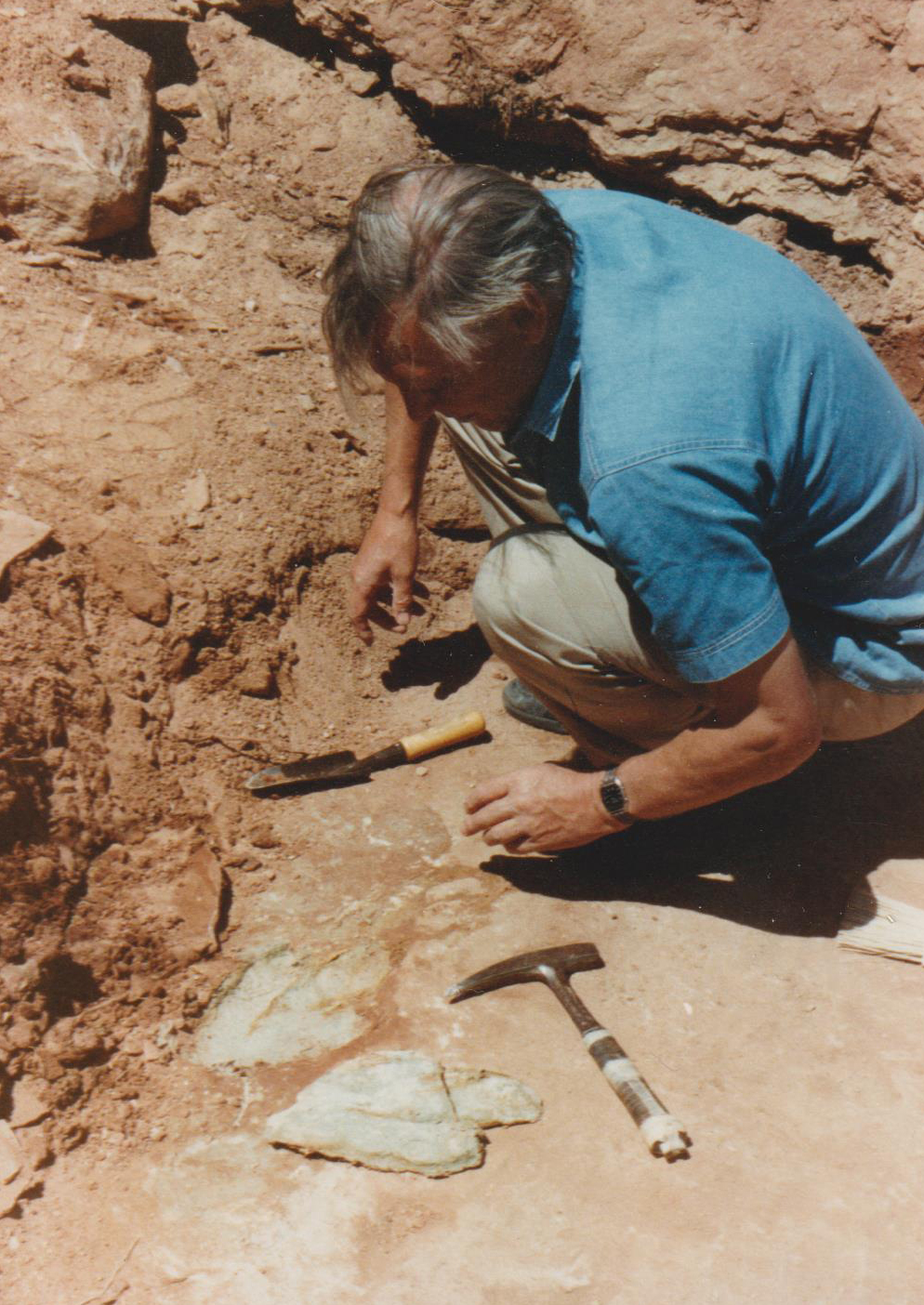Some information may be outdated.
When he came to Moab in the spring of 1988, David Attenborough was a sprightly 62-year-old who, though he was a modest, friendly and very affable man, had just recently been knighted by the queen of England. Sir David had many fascinating travel and film location stories to tell
If you had not heard of Sir David or the natural history documentaries he had already made for the BBC back then, it is likely that you have heard of him by now. As I write, Sir David is still going strong at the age of 94 and is among one of the world’s most effective advocates for respecting and treasuring “Life on Earth” and respecting our beautiful “Blue Planet” (also the titles of two of his best-known documentaries).
Sir David came to Moab to film scenes for the documentary “Lost Worlds, Vanished Lives” and I had recommended sites where his crew could get shots of dinosaur tracks, part of what we call the Moab Megatracksite where carnivorous dinosaurs likely similar to Utah’s state fossil Allosaurus had been active. These abundant tracks were left on the shores of a shallow, 160-million-year-old sea that had flooded into the area towards the end of the Middle Jurassic Epoch. They are still clearly visible in the area west of Klondike Bluffs.
I was lucky to have known of Sir David’s work since childhood. My father was involved in natural history and brought to me to a lecture by a young David Attenborough when I was seven or eight years old in the 1950s. After his talk, Sir David asked if there were any questions and I naively wondered who would be bold enough to question this celebrity. Some bold, tongue-in-cheek adult asked: “When are we going to get color TV?” David laughed and had a friendly answer. I reminded Sir David of this incident when we were in Moab 30 years later and he laughed again.
Sir David has always been interested in paleontology and lost worlds. Coincidentally his older brother, the late Sir Richard Attenborough, is famous for his role in the 1993 movie Jurassic Park. Did younger brother David get the jump on Richard by filming a factual “Jurassic Park” scene in Moab five years before the film?
Attenborough and the BBC choosing Moab as a key location for one of his classic documentaries was crucially important for the paleontological reputation of the town and county. In 1988, Moab was only just emerging as a potential dinosaur destination, ten years before the Dinosaur Diamond National Scenic Byway was created.
In 2003, I again met Sir David when he was filming dinosaur tracks in Colorado. I asked him if he remembered our 1988 meeting. His answer? “Of course, you’re wearing the same T-shirt!”
Appreciate the coverage? Help keep local news alive.
Chip in to support the Moab Sun News.





